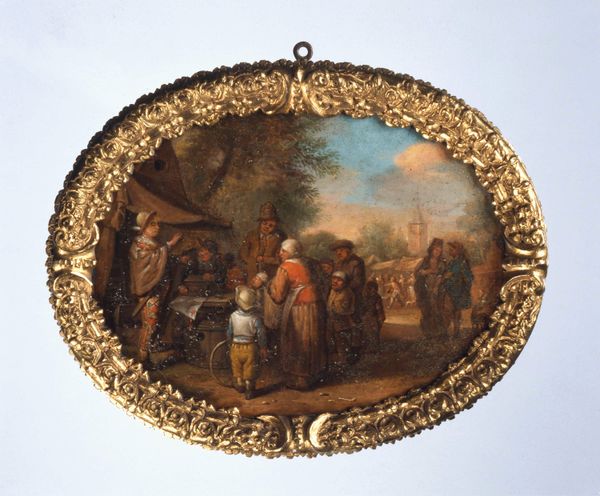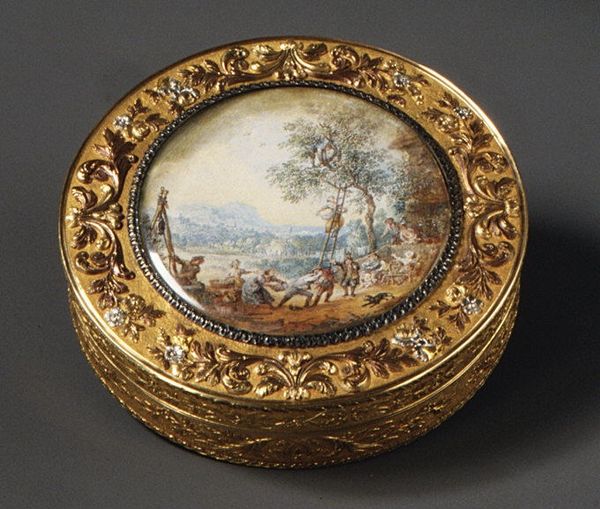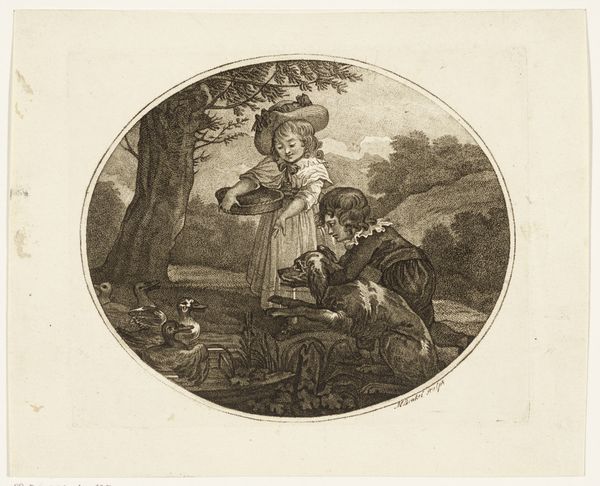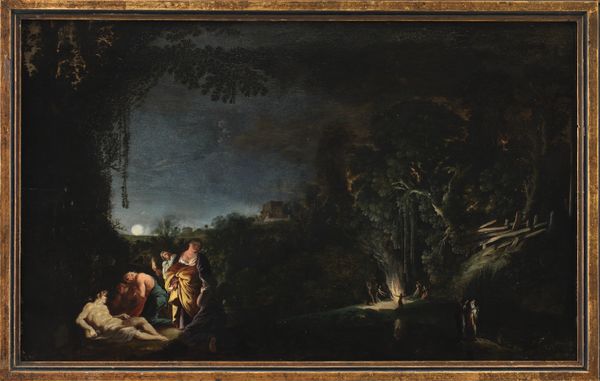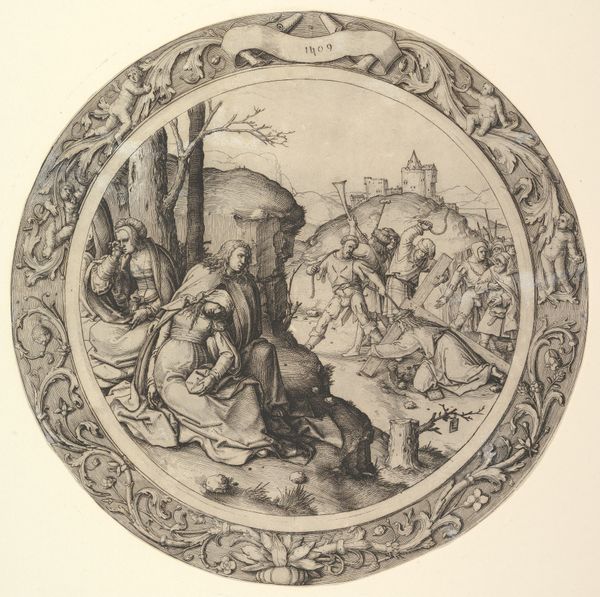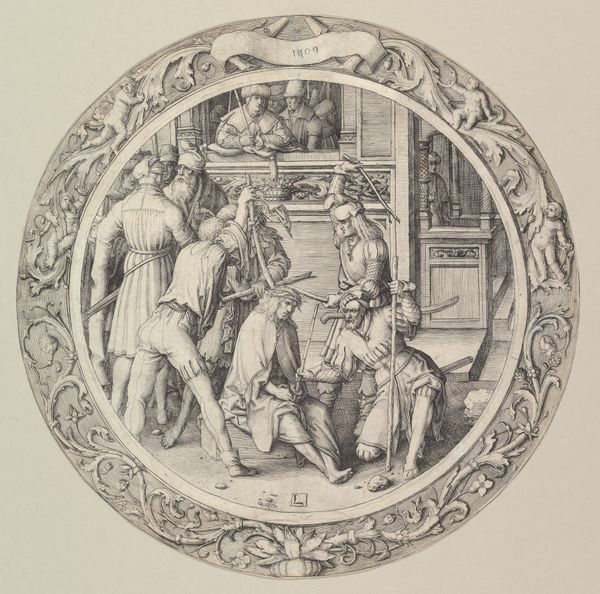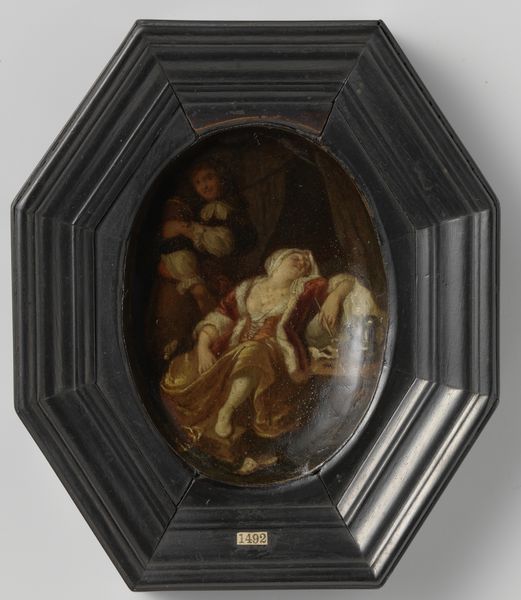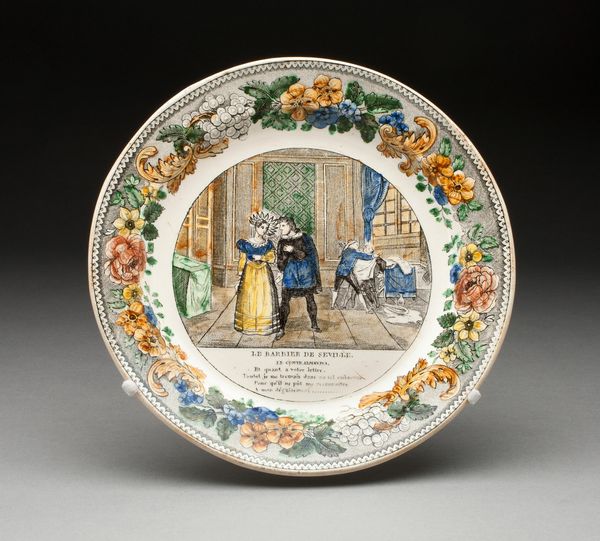
painting, oil-paint
#
dutch-golden-age
#
painting
#
oil-paint
#
landscape
#
genre-painting
Dimensions: height 9.7 cm, width 12.7 cm, height 12.0 cm, width 15.0 cm
Copyright: Rijks Museum: Open Domain
Editor: We're looking at Cornelis Dusart's "The Street Seller," an oil painting dating from around 1690 to 1710, currently held at the Rijksmuseum. There’s a real sense of bustling energy in this genre scene, especially with that ornamental frame. What jumps out to you when you examine the piece? Curator: Notice how the oval composition encourages the eye to circulate, led by the light reflecting on the seller's white headscarf. The artist balances areas of impasto—where paint is thickly applied, notably in the figures—with more thinly glazed areas. This variation in texture contributes to the liveliness of the scene. Have you considered how the artist employs orthogonals in the architecture to establish depth and pictorial space? Editor: I see the lines of the building leading back, but it feels…almost compressed? Curator: Precisely. This visual compression, rather than adhering to strict perspective, prioritizes a dense arrangement of forms. The seller becomes a visual anchor in the design, surrounded by various planes which emphasizes the figure within the spatial organization. Do you also see the interplay of darks and lights, which enlivens the picture and provides further tonal contrasts? Editor: The dark doorway really sets off the figures in the foreground. I hadn’t really thought about the push and pull of space and form like that before. Curator: This close observation permits us to focus on the artwork as a constructed object, shaped through skillful arrangement of formal elements, thereby exceeding any singular meaning in its representation. Editor: Right, and seeing it in that light makes the energy of the piece much more understandable. Curator: Indeed, by recognizing the aesthetic structure, we access a richer understanding of the piece’s intrinsic artistry.
Comments
No comments
Be the first to comment and join the conversation on the ultimate creative platform.
